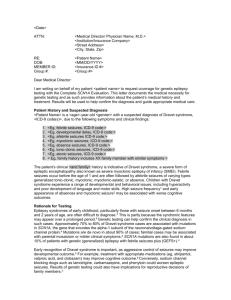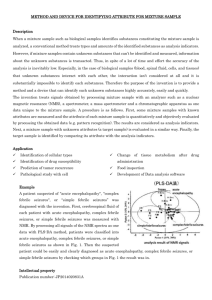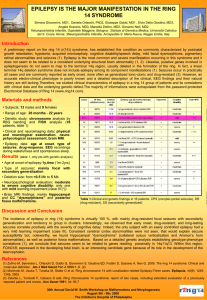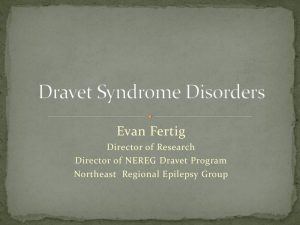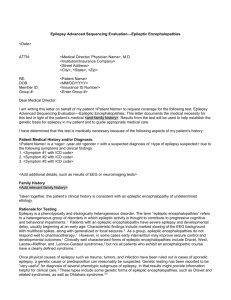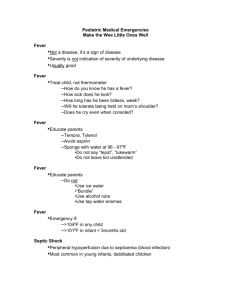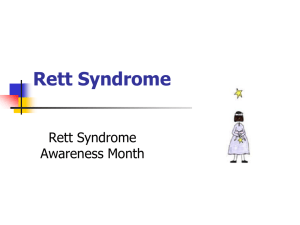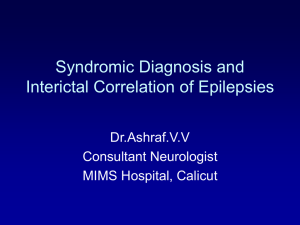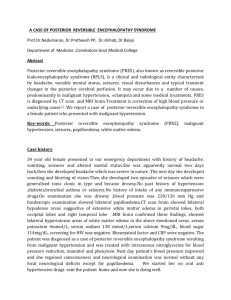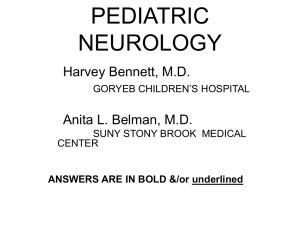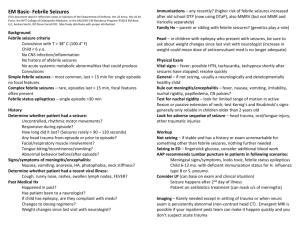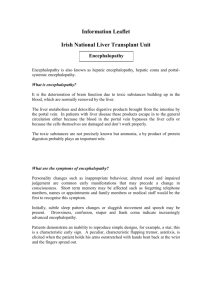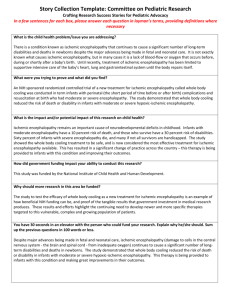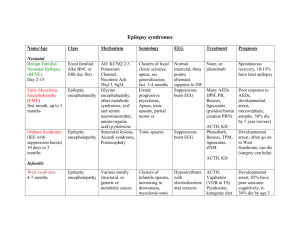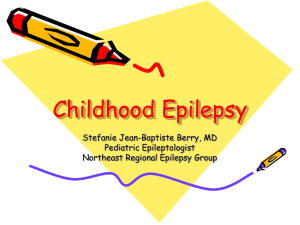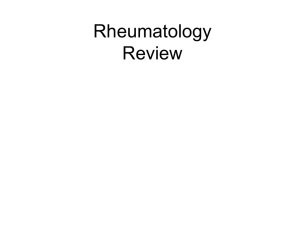Fever and fever related epilepsies (FIRES)
advertisement
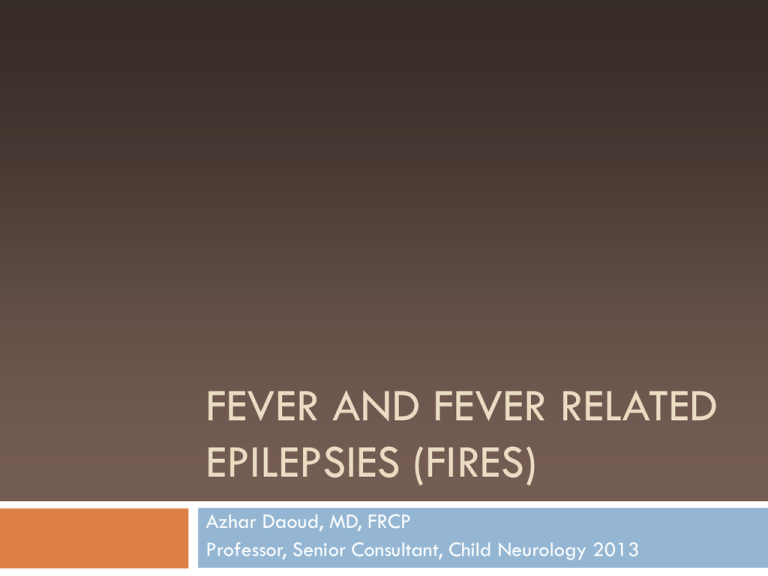
FEVER AND FEVER RELATED EPILEPSIES (FIRES) Azhar Daoud, MD, FRCP Professor, Senior Consultant, Child Neurology 2013 Febrile infection-related epilepsy syndrome (FIRES), Kramer et al 2011 2 Fever induced refractory epileptic encephalopathy in school age (Nabbout 2011) Devastating encephalopathy in school age children, mikealoff et al 2006 New onset refractory status epileptics, wilder-smith et al 2005 Progressive myoclonic epilepsies Sever myoclonic epilepsy in infancy (Dravet’s syndrome ) Fever induced refractory epileptic encephalopathy, Van Baalen et al 2010 Idiopathic Catastrophic Epileptic encephalopathy, Baxter et al, 2003 Electro-clinical Syndrome 3 Group of clinical entities that are reliably identified by a cluster of electro-clinical and developmental characteristics Largely genetic in origin Tend to have a strong relationship to developmental aspects of brain ILAE Commission 2009 Concept of Epileptic Syndromes 4 Factors taken into consideration include Seizure type(s) Age of Onset Precipitating factors Severity, Chronicity Diurnal/circadian cycling Etiology: genetics, structural pathology Associated neurological problems Interictal EEG SEVERE MYOCLONIC EPILEPSY IN INFANCY (DRAVET’S SYNDROME) • • • • In a previously normal child, usually starts with unilateral or bilateral clonic seizures accompanied with fever. Later myoclonic jerks supervene associated with partial seizures with autonomic or atonic features and automatisms may occur. EEG shows generalized spike wave and polyskike activity, photosensitivity and focal abnormalities. Refractory to treatment and development arrest are common Characteristics of Dravet’s Syndrome 6 Age Limit Affects normal healthy children Different types of seizures Difficult to control Psychomotor retardation Meticulous Management Not only to treat seizure but to prevent delay Poor outcome OHTAHARA SYNDROME • • • Ohtahara Syndrome (OS) also known as Early Infantile Epileptic Encephalopathy with burst suppression (EIEE) is a progressive epileptic encephalopathy. It is an extremely debilitating progressive neurological disorder, involving intractable seizures and severe mental retardation. No single cause has been identified, although in many cases structural brain damage is present. Complex febrile seizures and Febrile status epilipticus Genetic and environmental( Helen Cross 2012) Environmental is the fever, infection unknown Rule out meningitis (AAP 2011) EEG is not a justified investigation ( Nordli 2010) Genetics 9 Polygenic inheritance as it is common in certain families. Dominant Several identified chromosomal loci(audenaert et al ,2006) Sibling have 25% risk SCN1A mutation with some member have milder phenotypes (livingstone 2009) Mutation with ion channel gene, thermoregulaion and GABA kang 2006 Possible Etiology 10 Iron deficiency anemia and complex febrile seizures, Azhar Daoud et al, 2002 Inflammatory process may influence neuronal excitability dube et al ,2007 Alkalosis from fever induced hyperventilation schuchmann et al, 2009 When it is not (just) FS 11 Meningitis simple versus complex (Batra et al, 2011 and Kimia et al,2010) Is there a relationship to child immunization , Whooping cough Berkovic et al 2006 11 out of the 14 with encephalopathy are positive for SCN1A The vaccine may trigger earlier onset of Dravet Syndrome FIRES Characteristics 12 Previously normal children with status e Refractory to treatment lasting for days-wk Preceding febrile illness Poor Prognosis Resultant refractory epilepsy Profound neurocognitive deficit Wide age range FIRES Characteristics - ctnd 13 Apparently generalized but may have focal semiology, Nabbout et al 2011 Repetitive in cluster or continuous EEG, focal or multifocal Initial MRI normal but later may show mesial temporal signal Inflammatory marker in serum and CSF are normal Investigations 14 CSF May show minimal pleocytosis CSF show negative oligoclonal bands Receptor antibody studies ( voltage gated potassium channel, N methyl D aspartate0 are also negative, Nabbout 2011, although positive result has been reported, illingworth et al 2011. Theories 15 Unclear cause of encephalopathy May have immune process Genetic susceptibility is a possibility mainly PCDH 19 missense gene mutation specchio et al 2011. SCN 1A is unlikely Inflammatory mediators such as interleukin 1B, 1L-6 and tumor necrosis factors, Nabbout 2011 Management 16 Thiopental coma in ICU as they are resistant to AEDs Lack response to immunosuppressive Ketogenic diet may often help but this has not been universal, nabbout 2011 Poor prognosis with mortality up to 30% Seizure may disappear later on but with devastating out come Gastroenteritis related seizures 17 Recent entity no fever, no dehydration, no electrolyte imbalance, Uemura et al 2003 Age related 8-52 months Average onset of 2.3 days from onset of GE No child develop epilepsy out of 114 Some have clusters of seizures 18
